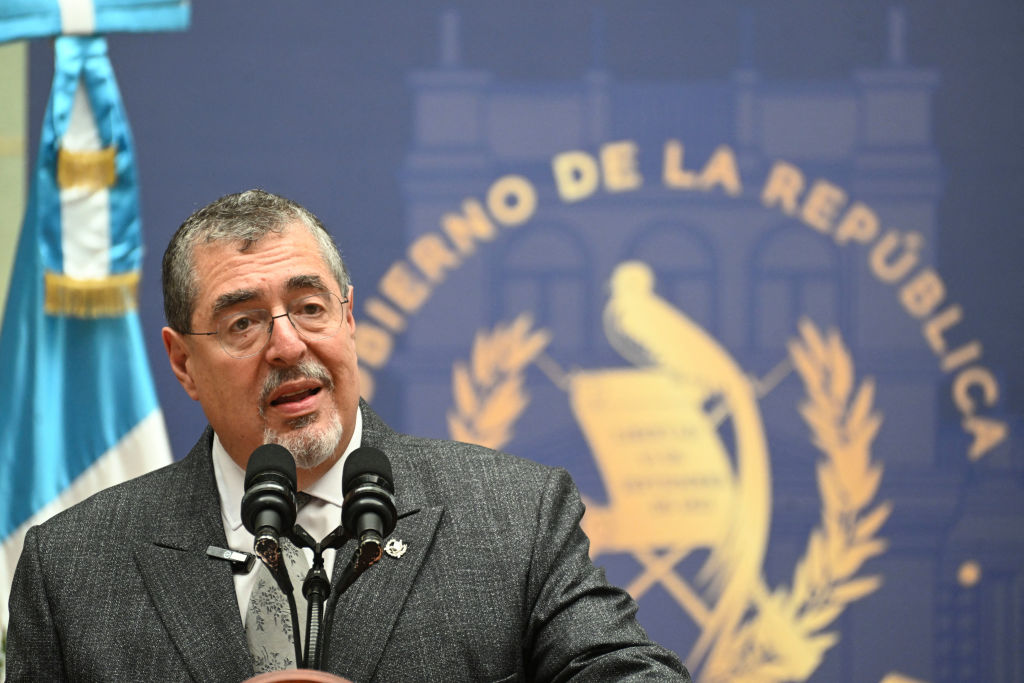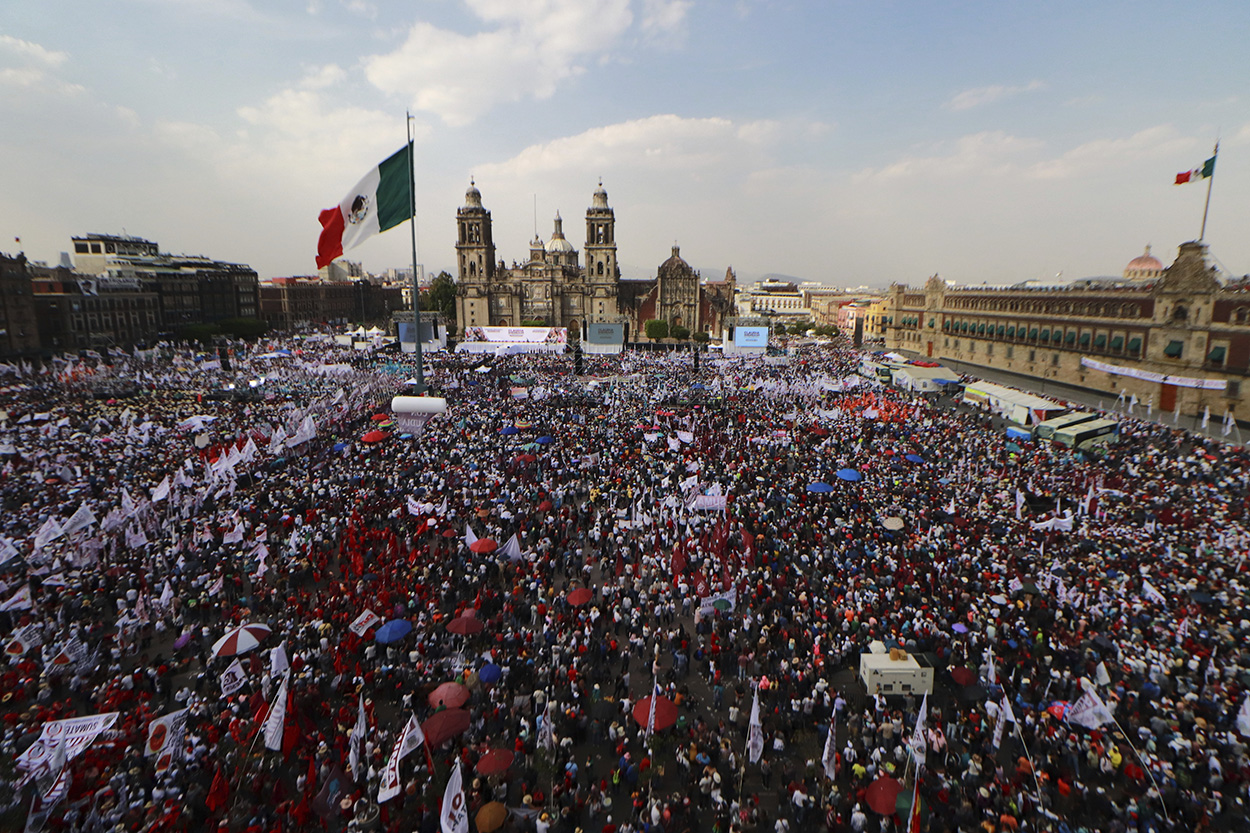Foresight Mexico: 2012 Presidential Elections and Economic Outlook
Foresight Mexico: 2012 Presidential Elections and Economic Outlook
AS/COA presented a panel discussion with leading experts on Mexico’s political and economic outlook leading up to the 2012 presidential elections.
Speakers:
- Alonso Cervera, Head of Non-Brazil Latin America Economics, Credit Suisse
- Carlos Ramírez,Analyst, Eurasia Group
- Lisa Schineller, Director, Latin American Sovereign Rating, Standard & Poor’s (Moderator)
Summary
A panel hosted by Americas Society/Council of the Americas discussed Mexico’s economic outlook in the context of the country’s upcoming presidential election. Despite macroeconomic stability during 11 years of the National Action Party (PAN) presidency, the panel agreed significant changes are necessary to improve the country’s economic prospects. Although the panel expressed differing degrees of optimism, all agreed drastic change would not be an easy task.
Where Does Mexico Stand?
“Bolstered by Banco de México, the Treasury, a centrist Mexican population, and a critical press, the Mexican economy is not without its positives,” said Lisa Schineller, director of Latin American sovereign rating at Standard & Poor’s. Mexico is one of the top 15 economies in the world in terms of nominal GDP, and debt is only 35 percent of GDP. Schineller added that the country has low inflation, limited external imbalances, and a strong BBB Standard and Poor’s credit rating. Yet this is not enough. Over the last five years, GDP has grown at an average rate of 1.5 percent. Meanwhile, over the last decade, this rate was around 2 percent, and poverty rose. Compared to the rest of Latin America, in both absolute and relative terms, growth is lagging. Panelists said higher growth will undoubtedly be the goal of Mexico’s next president.
The 2012 presidential election differs from the 2000 and 2006 elections, said Carlos Ramírez, analyst at Eurasia Group. Ramírez indicated that this year’s election will see fewer “polarizing cleavages” than in the previous two elections. In 2000, the 71-year domination of the presidency by the Institutional Revolutionary Party (PRI) ended. In 2006, the electorate voted against the Revolutionary Democratic Party (PRD) and left-leaning Andrés Manuel López Obrador’s economic policies. This year, without a polarizing cleavage, 60 percent of Mexicans simply want change, Ramírez said. He explained that for many Mexicans, the centrist PRI and its candidate Enrique Peña Nieto represent the best hope for change.
Assessing the Presidential Candidates
Panelists agreed that Peña Nieto would likely become the country’s next president. The PRI has a strong following throughout Mexico and holds 20 of 31 state governorships. Meanwhile, the PAN and PRD’s bases are concentrated in only a few regions.
However, Ramírez believes PAN candidate Josefina Vázquez Mota stands the best chance of defeating Peña Nieto. If Vázquez Mota runs as an outsider, she will be able to distance herself from President Felipe Calderon’s controversial security strategy. At the same time, she would be able to capitalize on the administration’s successes, including economic stability and housing and health policies. Vázquez Mota will also have a strong base, thanks to a united PAN following. Ramírez sees the PRD’s López Obrador with a limited chance at the presidency, as his new image as a moderate hurt his credibility.
Structural Economic Changes and Security
Ramírez stressed that he is not optimistic about major changes, no matter who wins. The next president still has to govern using a system that makes change very difficult. But Alonso Cervera, Head of Non-Brazil Latin America Economics at Credit Suisse, said he was hopeful. Cervera highlighted the need for economic reforms, such as breaking up monopolies and reforming the energy sector. Should the next administration fail to make these changes, Mexico could lose macroeconomic stability, Cervera warned. He added that if this occurred, the PRI would struggle to win the presidency.
Schineller mentioned that unlike other countries in Latin America, Mexico has yet to diversify its exports, since 80 percent of exports are sent to the United States. This is due in part to the North American Free Trade Agreement (NAFTA). Cervera said that Mexico took full advantage of NAFTA, but in turn this led to excessive dependence on the U.S. market. He explained that the country’s competitiveness suffers due to limited competition and insecurity, since crime is a “tax on consumption and investment.”
Security is the population’s top concern, said Schineller. Ramírez elaborated that local police forces are “in disarray” and 83 percent of Mexicans want the military in the streets. If elected, Peña Nieto would focus on tackling security challenges through more social and preventive policies, while moving away from a military approach. “At the end of the day,” Ramírez pointed out, “the security situation is a political problem.” One issue is that Mexico’s governors lack political incentives to cooperate with the federal government. For example, in Chihuahua and Coahuila the PRI still won the governorship for a second time despite a deteriorating security situation. Cervera noted that due to increasing drug consumption, there is now a broad consensus against tolerating the drug cartels. Cervera also mentioned improvements in Mexico’s security forces, which have better recruits and technology.
Reforming Pemex
Energy reform will be critical for the next Mexican president, panelists said. Thirty five percent of Mexico’s budget comes from oil revenues. Cervera indicated that after a period of decline, Petróleos Mexicanos (PEMEX), Mexico’s state oil company, is improving. The company now produces 2.5 to 2.6 million barrels a day and brought in $22 billion last year. Yet challenges remain. Finding and extracting oil has become more difficult, and increasing exploration and extraction require partnerships. PEMEX must be allowed to share risk through joint ventures, Cervera said.
However, Mexico’s constitution does not allow this arrangement, and two-thirds of Mexico’s congress is required to make an amendment. Realistically, Peña Nieto could capture only 50 percent of Congress to support the amendment. Still, Cervera is optimistic since the PRI has a good relationship with the PEMEX union. But Ramírez countered that a Banamex poll showed that 62 percent of the population is opposed to opening PEMEX to private investment.
On a final note, Cervera criticized Mexico’s lack of savings, despite high oil revenues. From 2003 to 2011, public sector revenues exceeded budget estimates by $155 billion, around 15 percent of the GDP. But by the end of last year, only $2 billion remained. He compared this to Chile, which managed to save 6 percent of its GDP after creating sovereign wealth funds in 2006. He stressed that Mexico must have better savings “for a rainy day.” However, Cervera assured that as long as oil prices don’t collapse, Mexico’s budget would remain intact.







